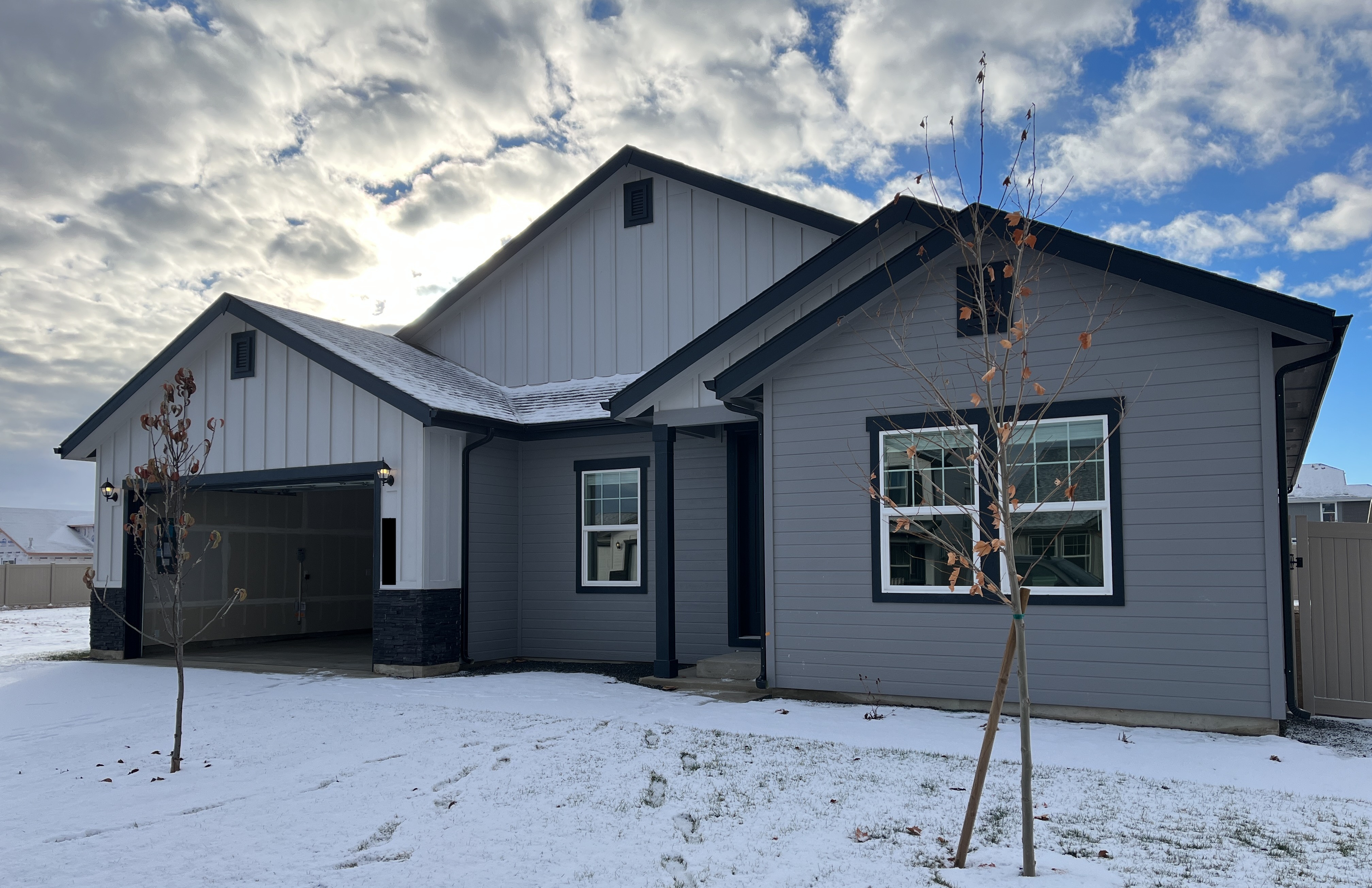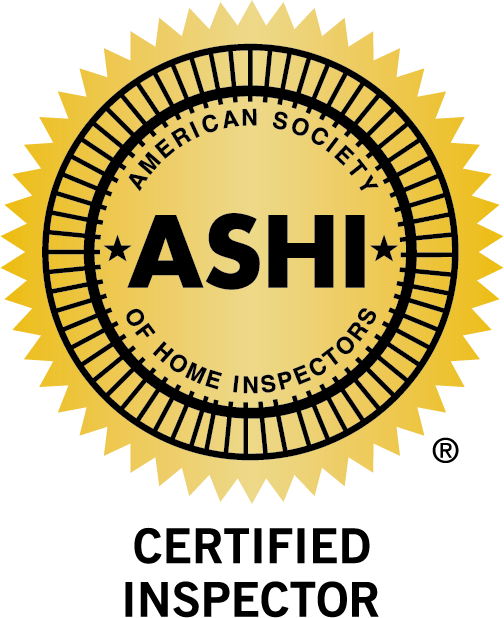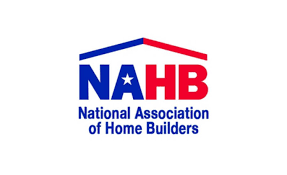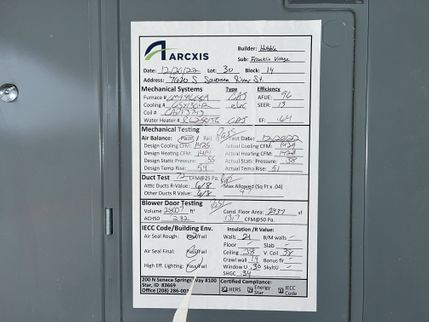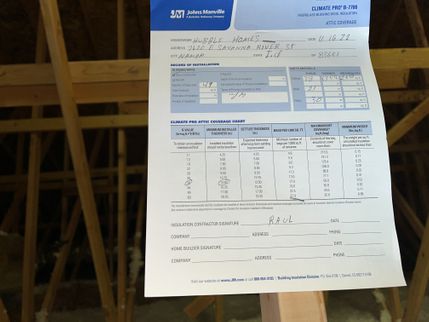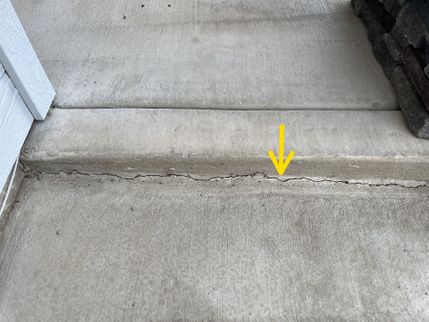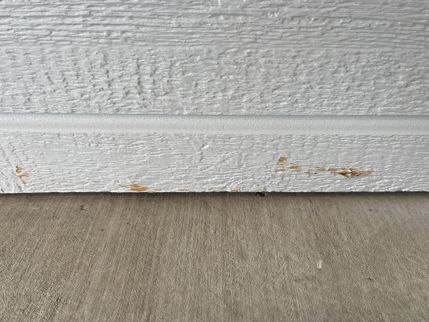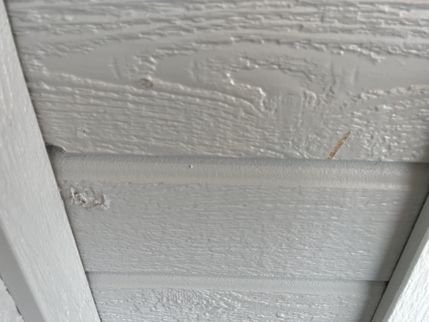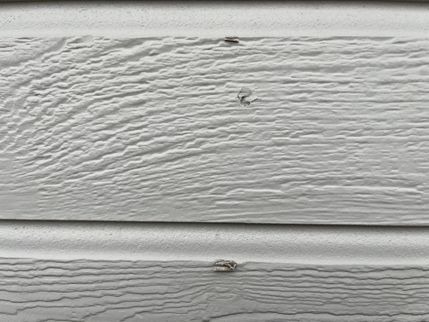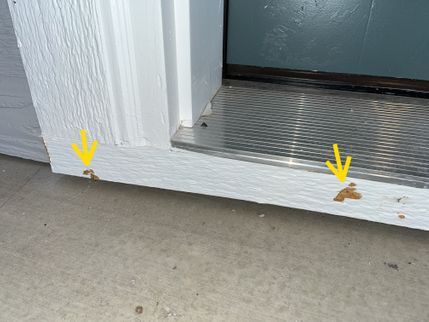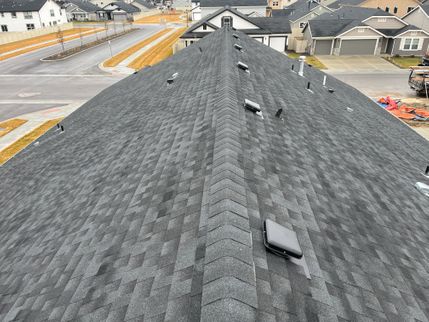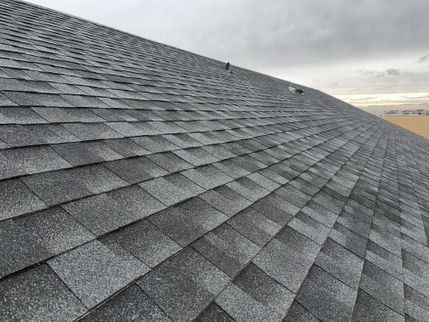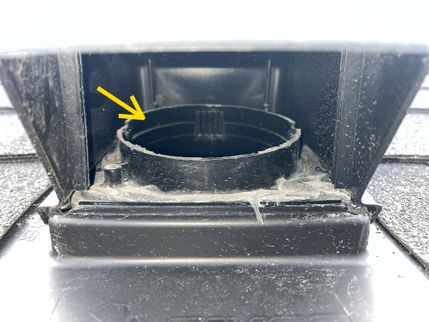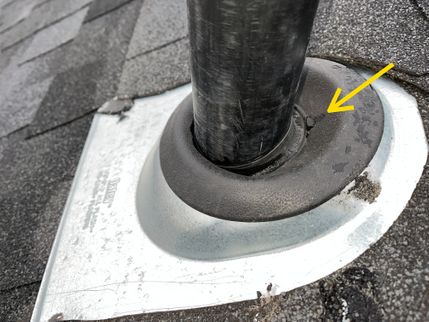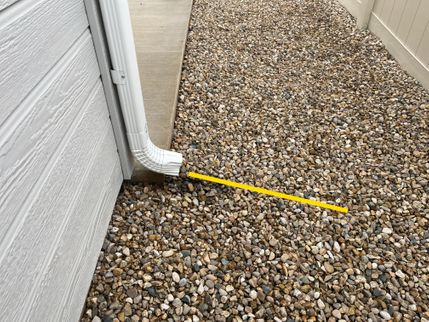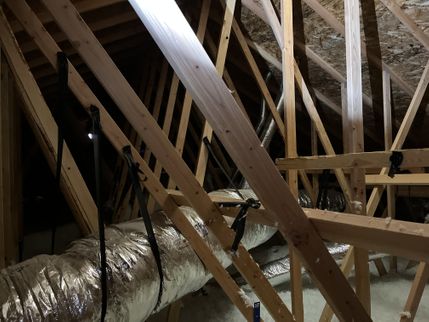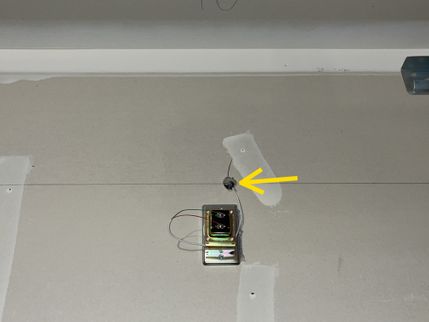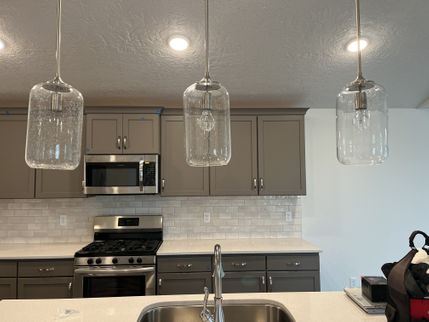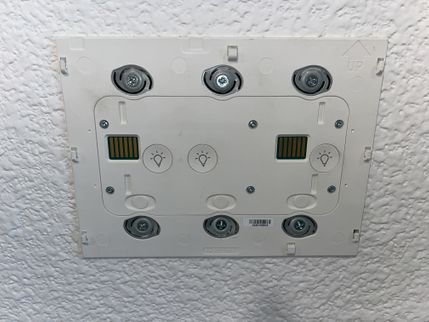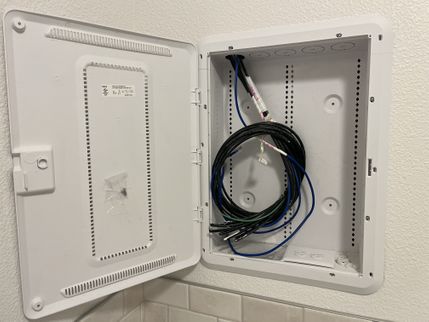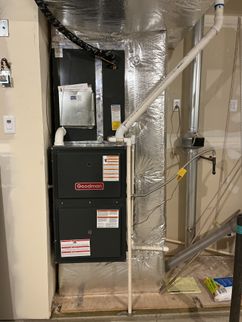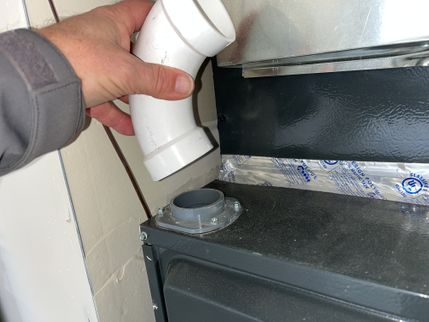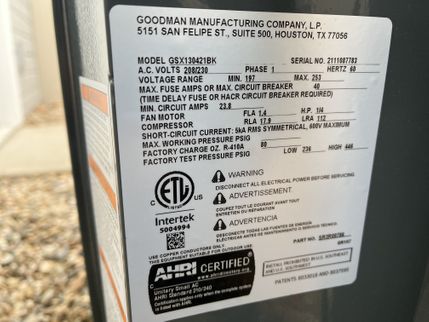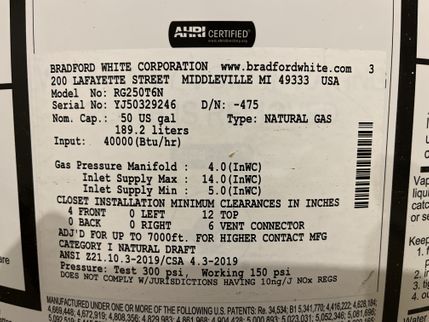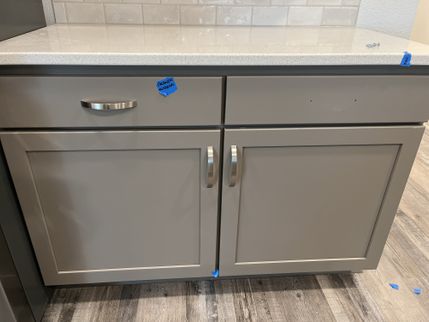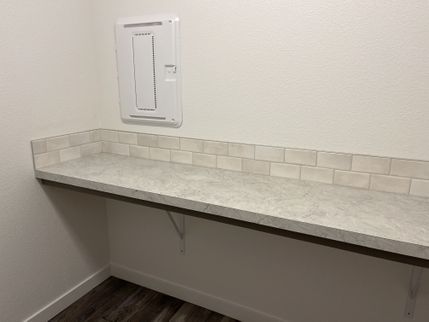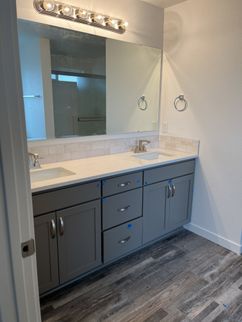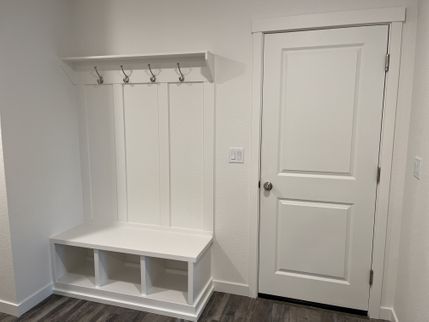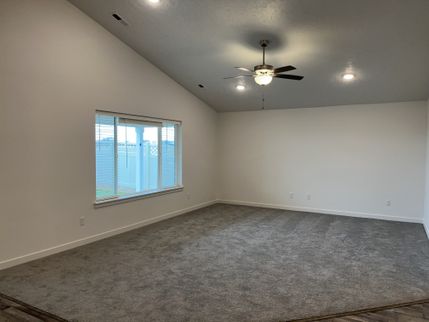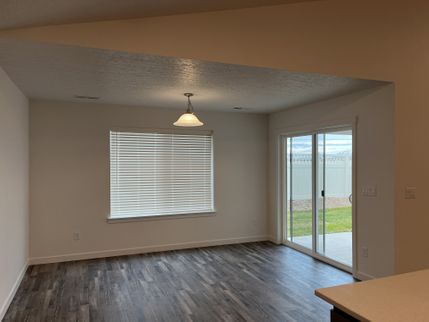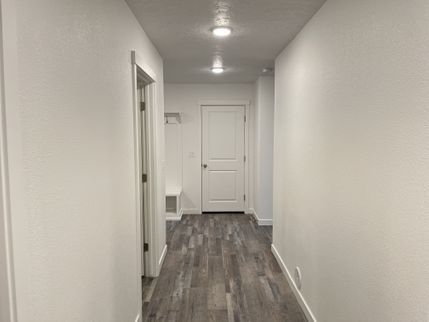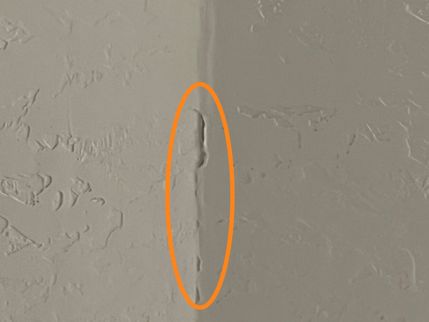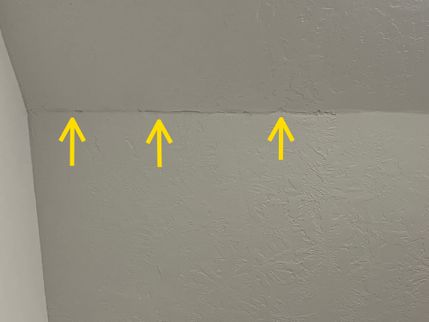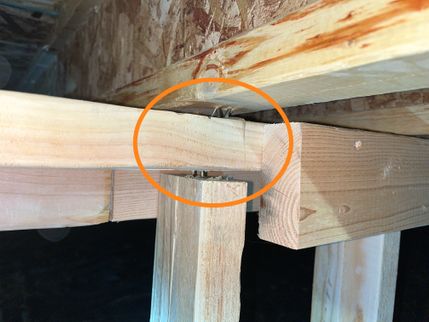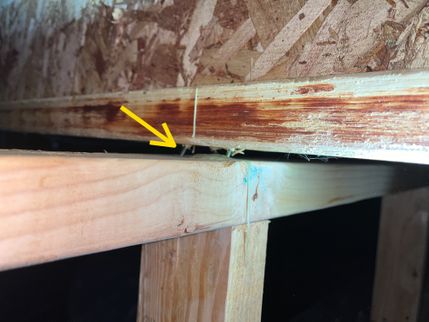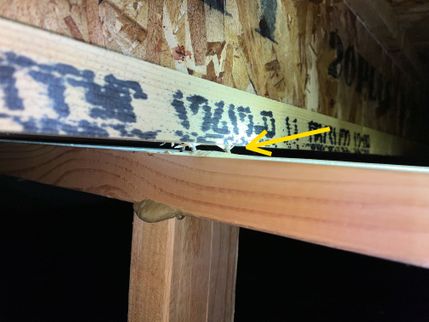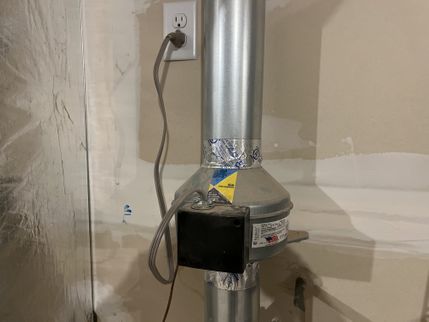The Scope and Purpose of a Home Inspection
Purchasing property involves risk
The purpose of a home inspection is to help reduce the risk associated with the purchase of a structure by providing a professional opinion about the overall condition of the structure. A home inspection is a limited visual inspection and it cannot eliminate this risk. Some homes present more risks than others. We cannot control this, but we try to help educate you about what we don’t know during the inspection process. This is more difficult to convey in a report and one of many reasons why we recommend that you attend the inspection.
A home inspection is not an insurance policy
This report does not substitute for or serve as a warranty or guarantee of any kind. Home warranties can be purchased separately from insuring firms that provide this service.
A home inspection is visual and not destructive
The descriptions and observations in this report are based on a visual inspection of the structure. We inspect the aspects of the structure that can be viewed without dismantling, damaging or disfiguring the structure and without moving furniture and interior furnishings. Areas that are concealed, hidden or inaccessible to view are not covered by this inspection. Some systems cannot be tested during this inspection as testing risks damaging the building. For example, overflow drains on bathtubs are generally not tested because if they were found to be leaking they could damage the finishes below. Our procedures involve non-invasive investigation and non-destructive testing which will limit the scope of the inspection.
This is not an inspection for code compliance
This inspection and report are not intended for city / local code compliance. During the construction process structures are inspected for code compliance by municipal inspectors. Framing is open at this time and conditions can be fully viewed. Framing is not open during inspections of finished homes, and this limits the inspection. All houses fall out of code compliance shortly after they are built, as the codes continually change. National codes are augmented at least every three years for all of the varying disciplines. Municipalities can choose to adopt and phase in sections of the codes on their own timetables. There are generally no requirements to bring older homes into compliance unless substantial renovation is being done.
This is just our opinion
Construction techniques and standards vary. There is no one way to build a house or install a system in a house. The observations in this report are the opinions of the home inspector. Other inspectors and contractors are likely to have some differing opinions. You are welcome to seek opinions from other professionals.
The scope of this inspection
This inspection will include the following systems: exterior, roof, structure, drainage, foundation, attic, interior, plumbing, electrical and heating. The evaluation will be based on limited observations that are primarily visual and non-invasive. This inspection and report are not intended to be technically exhaustive.
Your expectations
The overall goal of a home inspection is to help ensure that your expectations are appropriate with the house you are proposing to buy. To this end we assist with discovery by showing and documenting observations during the home inspection. This should not be mistaken for a technically exhaustive inspection designed to uncover every defect with a building.
Your participation is requested
Your presence is requested during this inspection. A written report will not substitute for all the possible information that can be conveyed verbally by a shared visual observation of the conditions of the property. If you can not attend the inspection, we are always available by phone to go over the report findings and answer any of your questions.
How to Read This Report
Getting the Information to You
This report is designed to deliver important and technical information in a way that is easy for anyone to access and understand. If you are in a hurry, you can take a quick look at our "Summary Page” and quickly get critical information for important decision making. However, we strongly recommend that you take the time to read the full Report, which includes digital photographs, captions, diagrams, descriptions, videos and hot links to additional information.
The best way to get the layers of information that are presented in this report is to read your report online (the HTML version), which will allow you to expand your learning about your house. You will notice some words or series of words highlighted in blue and underlined – clicking on these will provide you with a link to additional information.
For the most reliable viewing experience, I recommend viewing the report on as large a screen as practical, as much detail can be lost on small devices like smart phones. For similar reasons, reports should only be printed in color to retain as much detail as possible and minimize misinterpretation of photographs.
This report can also be printed on paper or to a PDF document.
Chapters and Sections
This report is divided into chapters that parcel the home into logical inspection components. Each chapter is broken into sections that relate to a specific system or component of the home. You can navigate between chapters with the click of a button on the left side margin.
Most sections will contain some descriptive information done in black font. Observation narrative, done in colored boxes, will be included if a system or component is found to be significantly deficient in some way or if we wish to provide helpful additional information about the system or the scope of our inspection. If a system or component of the home was deemed to be in satisfactory or serviceable condition, there may be no narrative observation comments in that section and it may simply say “tested,” or “inspected.”
Observation Labels
All narrative observations are colored, numbered and labeled to help you find, refer to, and understand the severity of the observation. Observation colors and labels used in this report are:
Summary Page
The Summary Page is designed as a bulleted overview of all the observations noted during inspection. This helpful overview is not a substitution for reading the entire inspection report. The entire report must be read to get a complete understanding of this inspection report as the Summary Page does not include photographs or photo captions.
Summary
Primary Concerns
No primary concerns were noted during this visual inspection.Repairs
- ESDW-1 Exterior Siding, Doors and Windows:
Siding has minor scuffs and areas that need paint touch-up.
- RCG-3 Roof, Chimney and Gutters:
Dryer vent cap is missing damper at the roof termination. Repairs should be made so vent cap is equipped with a damper.
- RCG-4 Roof, Chimney and Gutters:
One of the rubber boot flashings is pushed downward. This can cause water to accumulate in the low area and increase the chance of leaks. Rubber boot should be pulled upward.
- G-1 Garage:
Opening in garage wall needs sealed off where low voltage wiring enters.
- EDFW-1 Electric Distribution and Finish Wiring:
Bulbs are burned out and need replaced at the kitchen island lights.
- EDFW-2 Electric Distribution and Finish Wiring:
Cover plate is missing at switch panel in hallway.
- HCFV-2 Heating, Cooling, Fireplaces and Ventilation:
PVC elbow is loose and needs glued/secured above furnace, this is the combustion air intake.
- K-2 Kitchen:
Kitchen cabinets have missing handles, doors-drawers needs adjustment, minor scuff marks. Have builder complete any finish details.
- B1-2 Bathrooms:
Blue tape on bathroom cabinets indicate doors-drawers needs adjustment, minor scuff marks. Have builder complete any finish details.
- S-1 Structure:
Some of the knee wall framing in crawlspace has gaps-separation between floor joists. I recommend having a qualified contractor further evaluate and make any needed repairs.
Recommended Maintenance Items
- G1-2 Grounds:
Siding is in contact with landscape rock the front corner. Rock should be graded down and away so that siding is not touching ground.
Improves
- RCG-6 Roof, Chimney and Gutters:
Gutter downspouts have elbows only and drain near foundation. Advise installing downspout extensions, so that water is directed away from structure.
- I-2 Interior:
Drywall texture has less than professional finish details at vaulted ceiling peak in living room. This could be improved for appearance.
Due Diligences
- EDFW-3 Electric Distribution and Finish Wiring:
I recommend asking the builder if the kitchen island lights are on a possible 3-way switch. There's a switch near the patio door that does not appear to operate anything and could be a possible 3-way switch that's not working.
Notes
- GC-1 General Comments:
As this is a new construction home, there is a chance that building plans, permits, drainage plans, construction records, a list of sub-contractors and warranty information may be available. I recommend trying to obtain and keep this information for your records and for future re-sale.
- GC-3 General Comments:
Final interior cleanup has not been completed.
- G1-1 Grounds:
The landscaping here is recently installed on a site that's been recently disturbed for construction. This often includes a removal of previously existing topsoil, vegetation and undergrowth, which substantially disturbs and disrupts soil percolation. When the site around new construction is landscaped it can take years to mature to the point where the root structure breaks up the soil sufficiently to allow for good drainage. During the early years after the new build water may accumulate areas and sometimes there will be a need to improve ground drainage. This is not unusual and should be considered a normal part of the development of new ground cover. Oftentimes new ground cover can be quite soggy during the winter months, especially after significant and continuous rain or snow melt. Adding soil amendments can also help improve soil drainage over time.
- G1-3 Grounds:
Concrete has minor stress crack between driveway and porch.
- RCG-2 Roof, Chimney and Gutters:
Loose nails and construction debris needs removed from the roof.
- RCG-5 Roof, Chimney and Gutters:
Front downspout drains onto concrete near front entry. This is not ideal and may cause slick conditions near walkways.
- G-2 Garage:
Sheetrock has minor surface damage in area at garage ceiling.
- HCFV-3 Heating, Cooling, Fireplaces and Ventilation:
The air conditioning system could not be tested during inspection. Outdoor temperatures should exceed 65 degrees F for at least 24-hours or the air conditioning equipment can be damaged by testing.
- HCFV-4 Heating, Cooling, Fireplaces and Ventilation:
The home is equipped with a fresh air ventilation system. The fan unit is located in laundry room, it has a filter that will need replaced periodically. Have the builder explain how the system operates during your home orientation-final walkthrough.
📃 The Complete Inspection Report
General Comments
Building Characteristics, Conditions and Limitations
Style of Home: Ranch
Type of Building : Residential Single Family (1 story)
Approximate Square Footage: 2636
Approximate Year of Original Construction: New Construction
Attending the Inspection: Buyer's Agent
Occupancy: Unoccupied
Weather during the inspection: Cloudy
Approximate temperature during the inspection: 35 degrees
Ground/Soil surface conditions: Damp
For the Purposes of This Report, the Front Door Faces: South
As this is a new construction home, there is a chance that building plans, permits, drainage plans, construction records, a list of sub-contractors and warranty information may be available. I recommend trying to obtain and keep this information for your records and for future re-sale.
Final interior cleanup has not been completed.
Grounds
Drainage and Site
Clearance to Grade: Standard
Site Description: Flat, Moderate slope
Downspout Discharge: Above grade
Siding is in contact with landscape rock the front corner. Rock should be graded down and away so that siding is not touching ground.
The landscaping here is recently installed on a site that's been recently disturbed for construction. This often includes a removal of previously existing topsoil, vegetation and undergrowth, which substantially disturbs and disrupts soil percolation. When the site around new construction is landscaped it can take years to mature to the point where the root structure breaks up the soil sufficiently to allow for good drainage. During the early years after the new build water may accumulate areas and sometimes there will be a need to improve ground drainage. This is not unusual and should be considered a normal part of the development of new ground cover. Oftentimes new ground cover can be quite soggy during the winter months, especially after significant and continuous rain or snow melt. Adding soil amendments can also help improve soil drainage over time.
Driveways/Walkways/Flatwork
Driveway: Concrete
Walkways: Concrete
Patios: Concrete
Grounds, Trees and Vegetation
Trees/Vegetation too near building: No
Fences
Exterior Fencing: Present
The property has fencing in place. Inspection and evaluation of fencing is beyond the scope of a home inspection. If the fencing system is important for your use of this property, I recommended a self-examination to see how it will meet your needs. I may make cursory comments about fencing as a courtesy.
Exterior Siding, Doors and Windows
Siding and Trim
Siding Material: Composition wood panels
Trim Material: Wood
Eaves, Soffits and Fascia
Wood
Exterior Doors
Exterior Door Styles: Fiberglass, Sliding glass (vinyl frame)
Exterior Windows
Window Frames: Vinyl
Decks, Porches and Balconies
Concrete Decks, Stoops, Landings and Porches
Concrete Structure: Noted at the entry
Roof, Chimney and Gutters
Roof Materials
Method of Roof Inspection: Walked on roof
Roof Style: Gable
Flashings, Valleys and Penetrations: Present and Visually Standard
Roof Covering Materials: Architectural grade composition shingle
Approximate Age of Roof Covering: New
Loose nails and construction debris needs removed from the roof.
Chimneys and flue pipes
Present
Chimney Material: Metal flue pipe (water heater)
Vents and flashings (for roof penetrations and ventilation systems)
Dryer vent cap is missing damper at the roof termination. Repairs should be made so vent cap is equipped with a damper.
Gutters and Downspouts
Gutter and Downspout Materials: Aluminum
Gutter downspouts have elbows only and drain near foundation. Advise installing downspout extensions, so that water is directed away from structure.
Attic
Attic Access
Attic access location: Garage
Method used to observe attic: Crawled partial
Attic Insulation
Insulation Type: Blown Fiberglass
Insulation depth: 13-14 inches
Approximate Insulation R-Value on Attic Floor: 38
Attic and Roof Cavity Ventilation
Attic Ventilation Method: Soffit Vents, Roof vents, Gable vents
Garage
Garage General
Garage Type: Attached
Wall and Ceiling Materials: Sheetrock
Garage-House Fire Separation : YES
Garage Doors and Automatic Openers
Overhead Garage Door Type: Metal (insulated)
Automatic Garage Opener: Present
Garage door opener type : Two Automatic
Auto-reverse safety features: Tested and working
Garage Occupant Door (from garage to inside home): Fire Rated
Garage Floor
Garage Slab: Concrete
Electric Service
Electric Service
Service Entrance: Below Ground
Meter Base Amperage: 200
Electric Service Equipment
Main Panel Amperage: 200 amps
Electric Service Amperage: 200 amps
Main Electric Panel Location: Garage
Panel Manufacturer: Square D
AFCI Circuit Breakers : AFCI breakers present and tested
Appliance Disconnects
Disconnects Noted: Air Conditioner
Electrical Grounding System
Grounding method (main service panel) : UFER Ground Noted
A UFER ground connection was noted for the electrical grounding system. These are required and standard on newer construction houses. These grounds connect the electrical system to Rebar in the house foundation and make a reliable path to the earth for "earthing" or grounding the electrical system.
Electric Distribution and Finish Wiring
Branch Wiring
Wire Material: Copper
Wiring Method: Non-metallic sheathed cable
Receptacles and Fixtures
Inspection Method: Tested All Accessible
Electric Receptacles: Three wire receptacles
I recommend asking the builder if the kitchen island lights are on a possible 3-way switch. There's a switch near the patio door that does not appear to operate anything and could be a possible 3-way switch that's not working.
GFCI protected receptacles are installed at all required locations.
Ceiling Fans
Ceiling Fans: Present and Tested
Smoke and Carbon Monoxide Alarm Systems
CO Alarms: Present
CO Alarms Noted: Outside all Sleeping Areas
Outside all Sleeping Areas
Smoke Alarms: Present
Smoke Alarms Noted: On Main Floor
On Main Floor In All Bedrooms
In All Bedrooms
Smoke alarms and carbon monoxide detectors were tested and operated.
Heating, Cooling, Fireplaces and Ventilation
Heating System
Energy Source: Natural gas
Heating Method: Electric forced air furnace
Manufacturer: Goodman
Capacity: 80,000 btu's
Age: New
Vents and Flues
Air Filters
Filtration Systems: Disposable
The heating and cooling system has disposable air filters installed. These should be changed quarterly or more to ensure proper air flow at the furnace. Be sure to install the filters with the arrows pointing in the same direction as the air flow in the furnace.
Air filter location: 2- Return air grill (ceiling)
Cooling Systems and Heat Pumps
Air Conditioning Present
Manufacturer: Goodman
System Type: Air Source
Energy Source: Electric
Age: New
The air conditioning system could not be tested during inspection. Outdoor temperatures should exceed 65 degrees F for at least 24-hours or the air conditioning equipment can be damaged by testing.
Heating and Cooling Distribution Systems
Heat Source in Each Room: Present
Distribution Method: Forced Air / Ducts
Duct materials: Insulated flex duct
Mechanical Ventilation Systems
Bath Fan Ducting: Ducted to exterior
Kitchen Fan Ducting: Ducted to exterior
Whole House Fans, Ventilation and HRVs: Fresh air ventilation system
The home is equipped with a fresh air ventilation system. The fan unit is located in laundry room, it has a filter that will need replaced periodically. Have the builder explain how the system operates during your home orientation-final walkthrough.
Fuel Storage and Distribution
Gas Meter
Present
Gas Shutoff Location: Side of structure
Gas Pipe Materials: Steel pipe
Gas Piping
Gas Piping Materials Noted: Black iron steel pipe, Majority not visible
Plumbing
Water Meter
Water meter location: Front exterior
Water Service Supply (into home)
Pipe Material: Black poly pipe
Water Supply: Public water
Water Pressure: 60 PSI
Pressure Reducing Valve: Present
This house has a pressure reducing valve to control the water pressure.
Main Water Shut-off Location: Crawlspace
Distribution Pipe (inside home)
Supply Pipe Materials: PEX
Functional Flow: Satisfactory
Waste Pipe and Discharge
Discharge Type: Public Sewer
Waste and Vent Pipe Materials: ABS plastic
Location of Sewer Cleanout: Front exterior
Water Heater
Water Temperature
Water Temperature Measured During Inspection: 122 Degrees F
Exterior Hose Bibs
Operating
Additional Plumbing
Irrigation
Present
An irrigation system is installed. Sprinkler systems are beyond the scope of this inspection.
Kitchen
Sinks and Faucets
Tested
Cabinets and Countertops
Countertop Material: Slab Surface
Cabinet Material: Wood
Disposers
Disposer: Operated
Dishwasher
Dishwasher: Operated
Ventilation Method
Ventilation type : Microwave exhaust fan
Fan Ducted to Exterior
Ranges, Ovens and Cooktops
Range/ Oven /Cook-tops: Gas
Built-in Microwaves
Tested and operated
Refrigerators
Refrigerator: Operating
Laundry Facilities
Washer
None noted
Dryer
None noted
Power Source: Gas and electric
Exhaust Duct: Ducted to Exterior, Roof termination
Laundry Ventilation
Type: Laundry fan
Bathrooms
Sinks and Cabinets
Tested
Toilets
Tested
Bathtubs / Showers
Tested
Bathroom Ventilation
Type: Bath fan
Interior
Floors and Floor Materials
Floor Materials: Vinyl plank flooring (LVP), Carpet
Walls, Ceilings, Trim, Hallways and Closets
Wall and Ceiling Materials: Drywall
Wall Insulation
Wall Insulation: R-21
Interior Doors
Interior Doors: Hollow Core
Windows
Window Glazing: Double pane
Interior Window Frame: Vinyl
Window Styles: Sliding, Single hung
Structure
Foundation
Building Configuration: Crawlspace
Foundation Description: Poured concrete
Piers, Support Posts, and Footings
Columns, Support Piers, Footings : Foundation knee walls on concrete spread footings
Floor, Wall and Ceiling Framing
Wall Framing: Wood framed
Wall Sheathing: Not visible
Floor Framing: Wood I-Joists
Sub-Floor Material: OSB
Ceiling Framing: Bottom cord of truss
Crawlspace
General Crawlspace
Crawlspace: Present
Crawlspace Access
Method of Inspection: Crawled
Crawlspace access location: Master closet, Front bedroom closet
Vapor Barrier
Vapor Barrier Material: Plastic on earth
Crawlspace Ventilation
Insulation
Insulation Type: Fiberglass
Moisture Conditions
No water was visible or present at the time of inspection
Receipt -- 📃 The Complete Inspection Report
1784 E River St, Nampa, ID 83687
| Inspection Fee | $400.00 |
| New Construction Discount | $-50.00 |
| $350.00 | |
| PAID |
Boise Valley Home Inspection
C/O Trent Tarter
7562 E Merganser Drive
Nampa , Idaho 83687
208-586-2358
-1.png)

